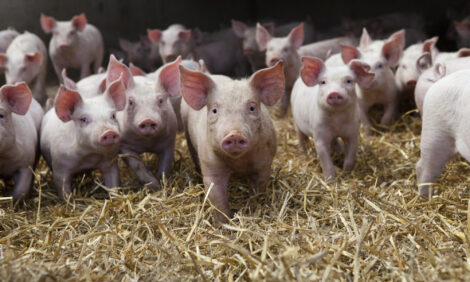



Emerging Diseases in the Swine Industry
The increasing demand for animal protein and the rapidly growing markets in Latin America and Asia are driving an increase in the production and trade of food animals globally. Many experts believe that these conditions will increase the risk of pandemics, the emergence of diseases in new locations and the development of novel genetic forms of existing pathogens. West Nile virus in European horses, Bluetongue and Schmallenberg viruses in production animals, and a novel strain of Escherichia coli O104:H4 bacteria in the food chain in Germany last year, are perhaps examples of this theory in practice.The emergence of a new or unexpected disease is always a potential threat to food production systems based on the intensive rearing practices. The only defence is to isolate and characterise the new pathogens as quickly as possible and then develop preventive measures, such as new vaccines, changes in husbandry, or restrictions on movement. A few years ago, this would have taken a considerable amount of time, and may even have been impossible.
The good news is that the development of new molecular technology techniques has meant that emerging pathogens can now be identified and characterised very quickly. For example, it took just three days to identify the German E. coli strain and reveal that it was a new type that had never been seen before in humans.
Once a genome is characterised, it is possible to look for clues to the origin of the pathogen, and to develop a specific course of action. The German E. coli was traced back to central Africa, and it was known that this particular strain would not respond to antibiotics. In fact, using antibiotics was only likely to make the infection worse.
The genome of the Schmallenberg virus was sequenced within a week of the first case being reported in Germany in November 2011. A real-time PCR diagnostic test was developed and made commercially available in a matter of months by Thermo Fisher Scientific.
The genetic changes which make the PRRS virus so difficult to control in swine herds, are another example of how molecular technology can be used to our advantage. Thermo Fisher Scientific is currently working on a project to characterise the virus genome in more detail and thus open up new and more effective options for both diagnostics and vaccines. In the future, swine veterinarians may be able to offer farmers a specific vaccine which is matched exactly to the indigenous virus strain causing outbreaks on their farm. They will also have a better understanding of the reservoir of infection and be able to adjust vaccination to match any changes in virus type.
This very precise, prophylactic approach to animal health could be applied to many common infections in cattle and poultry, as well as swine. It has the potential to reduce our reliance on antibiotics as a means of maintaining the health and productivity of food animals, and as such would no doubt be welcomed by farmers, consumers and legislators.
Our ability to respond rapidly and precisely to disease threats by sequencing genomes and developing fast, reliable diagnostics, may prove increasingly valuable to keep production animals healthy and to safeguard our global food supply in the future.
For more information about swine diagnostics, click here or connect to the Thermo Fisher Scientific Swine Resource Center.








